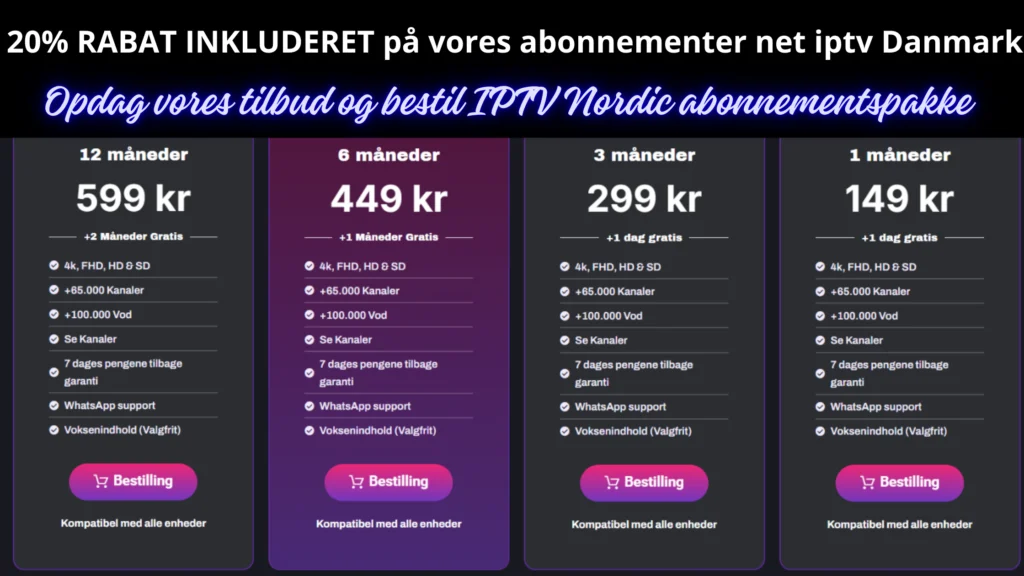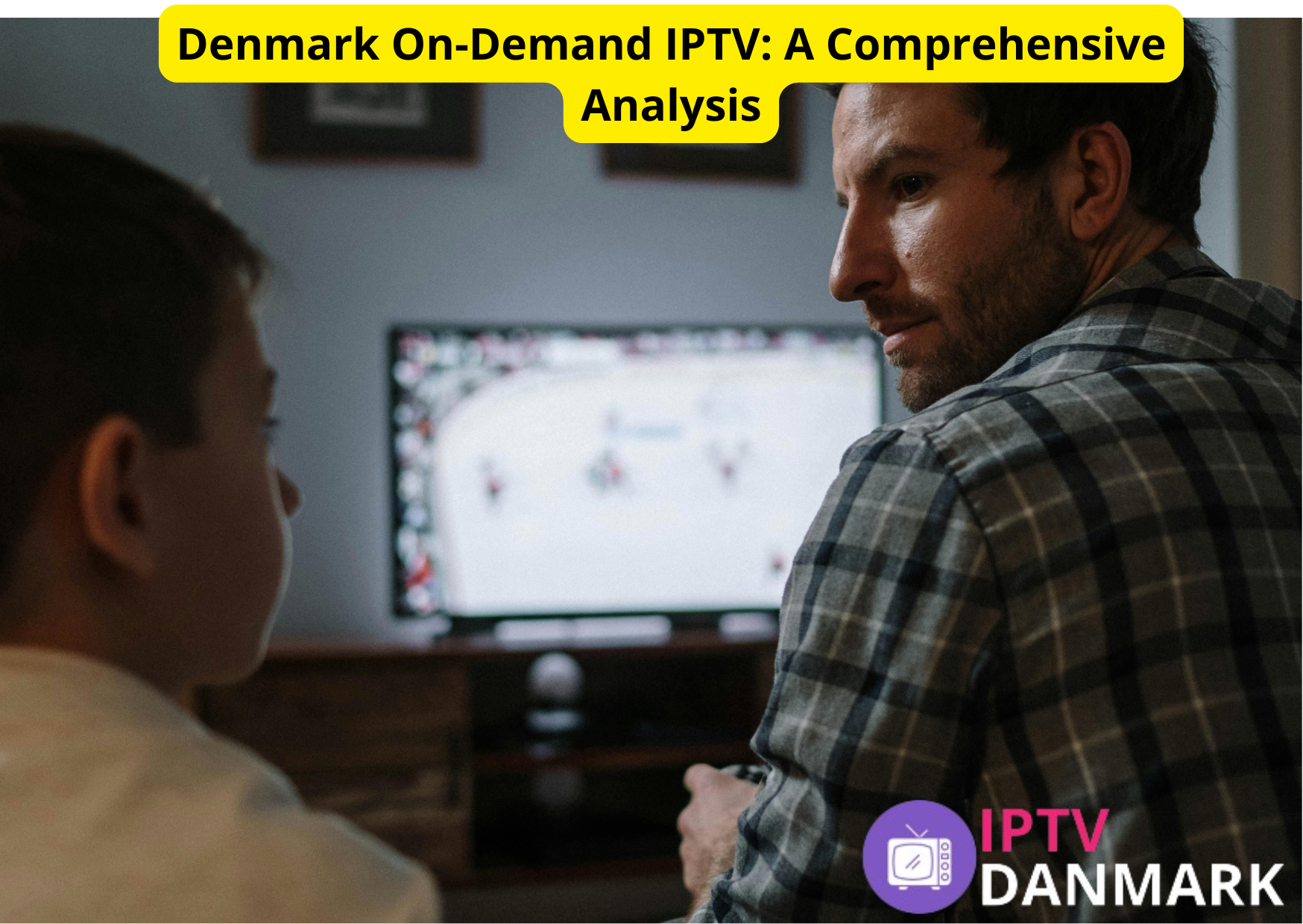Introduction to Denmark On-Demand IPTV: A Comprehensive Analysis
Definition and Concept of IPTV
IPTV, or Internet Protocol Television, represents a paradigm shift in how television content is delivered and consumed. Unlike traditional broadcasting, IPTV transmits television programs and on-demand video through the internet, allowing users to access content anytime, anywhere. This technology has gained immense popularity globally, including in Denmark, due to its flexibility and innovative features. IPTV combines live television, catch-up services, and a vast library of on-demand content, offering viewers unprecedented control over their entertainment experience.

Overview of Traditional TV Broadcasting
Traditional TV in Denmark, like in many countries, relies on broadcasting methods such as terrestrial signals, cable, or satellite. Public broadcasters like DR (Danish Broadcasting Corporation) have long dominated the media landscape, funded by license fees and offering scheduled programming to cater to various audiences. While traditional TV provides a sense of routine and reliability, it lacks the customization and on-demand options offered by IPTV services.
Evolution of Television Technology in Denmark
The Danish television industry has evolved significantly over the past decades. From the early days of black-and-white broadcasts to the advent of cable TV in the 1980s and digital terrestrial television (DTT) in the 2000s, technology has continually reshaped the viewing experience. The rise of IPTV marks the latest chapter, aligning with Denmark’s high internet penetration rates and tech-savvy population. This shift reflects a broader trend of moving away from linear TV consumption to personalized and flexible viewing options.
Content Delivery Methods
Internet-Based Streaming in IPTV
IPTV relies on high-speed internet to deliver content using IP packets, ensuring seamless streaming without the need for traditional broadcasting infrastructure. This delivery method allows for interactive features like pausing live TV, rewinding programs, or accessing a vast on-demand library. In Denmark, IPTV providers such as YouSee and Waoo leverage robust broadband networks to ensure high-quality streaming.
Broadcast Signals in Traditional TV
Traditional TV employs radio waves, satellite signals, or cable networks to deliver content. These methods require specific hardware like antennas, satellite dishes, or cable boxes. While they provide stable and reliable service, they lack the flexibility to adapt to changing viewer preferences, such as on-demand viewing or multi-device support.

Advantages and Limitations of Each Method
IPTV Advantages:
- On-demand content and live streaming.
- Compatibility with multiple devices.
- Interactive features like program recording and parental controls.
IPTV Limitations:
- Dependence on high-speed internet.
- Potential buffering issues during network congestion.
Traditional TV Advantages:
- Consistent service unaffected by internet outages.
- Familiarity and ease of use for older audiences.
Traditional TV Limitations:
- Limited interactivity and personalization.
- Fixed schedules restrict viewing flexibility.
Channel Availability and Variety
Local and International Channels on IPTV
Danish IPTV services offer extensive channel lineups, including local favorites like DR1, TV 2, and Kanal 5, as well as international channels catering to diverse tastes. This variety ensures that IPTV appeals to a broad audience, from sports enthusiasts to movie buffs and news followers.
Limitations of Channel Lineups in Traditional TV
Traditional TV often faces constraints in channel offerings due to bandwidth limitations or regional restrictions. Viewers may need multiple subscriptions to access niche or international content, making it less efficient than IPTV’s comprehensive packages.
On-Demand Content vs. Scheduled Programming
IPTV’s on-demand libraries allow Danish users to watch content at their convenience, freeing them from the rigidity of traditional TV schedules. This flexibility is particularly attractive to younger viewers accustomed to the immediacy of digital services like Netflix or Viaplay.
Flexibility and Accessibility
Multi-Device Support with IPTV
IPTV platforms in Denmark are compatible with smart TVs, smartphones, tablets, and PCs, enabling users to switch seamlessly between devices. This multi-device support enhances accessibility, catering to modern, mobile lifestyles.
Traditional TV’s Dependency on Hardware (Antennas, Cable Boxes)
In contrast, traditional TV depends heavily on fixed hardware, limiting portability and convenience. This dependency can be a barrier for users who prefer watching content on personal devices rather than communal television sets.
Viewing Options for Danish Consumers
Danish viewers increasingly favor IPTV for its flexibility, especially as busy schedules and mobile lifestyles demand on-the-go entertainment. However, traditional TV retains a loyal audience among older generations who value its simplicity and reliability.
Cost and Subscription Models
Pricing of IPTV Subscriptions in Denmark
IPTV services in Denmark typically offer tiered subscription plans, ranging from basic packages with local channels to premium bundles with international content, sports, and movies. Providers like Stofa and Boxer often include discounts for long-term commitments or bundled internet and TV plans.
Costs of Traditional TV Services (License Fees, Cable Subscriptions)

Traditional TV in Denmark incurs mandatory license fees for public broadcasting and additional costs for cable or satellite subscriptions. While these costs provide access to a wide range of programming, they can be higher than IPTV plans, especially for users seeking diverse content.
Value for Money: Which is More Economical?
IPTV generally offers better value due to its customizable packages and access to vast content libraries. Traditional TV, while reliable, may feel restrictive and costlier in comparison.
User Experience and Features
Interactive Features and Personalization in IPTV
IPTV platforms excel in offering interactive features like program guides, personalized recommendations, and customizable profiles. These features enhance user engagement and satisfaction, catering to individual preferences.
Limited Interaction in Traditional TV
Traditional TV offers a passive viewing experience with limited options for customization or interaction. This lack of flexibility can be a disadvantage in an era of personalized entertainment.
User Interface and Navigation Differences
IPTV interfaces are often intuitive and feature-rich, with search functions and genre filters. Traditional TV interfaces, by contrast, are simpler but less dynamic, reflecting their more static programming model.
Technology Requirements and Infrastructure
Internet Speed and IPTV Performance in Denmark
High-speed internet is crucial for IPTV performance. Denmark’s advanced broadband infrastructure ensures minimal buffering and high-definition streaming, making IPTV a viable option for most households.
Hardware Requirements for Traditional TV
Traditional TV relies on equipment like set-top boxes, antennas, or satellite dishes. While these devices are effective, they lack the versatility of IPTV-enabled gadgets.
Future-Readiness of Each System
IPTV is inherently more future-ready, leveraging evolving internet technologies to deliver content. Traditional TV, although stable, faces challenges in adapting to the digital age.
Impact on the Entertainment Industry in Denmark
Role of IPTV in Shaping Content Production
IPTV has spurred innovation in Danish content production, with a focus on on-demand series, documentaries, and niche genres. This shift reflects changing viewer demands and preferences.
Traditional TV’s Influence on Danish Culture and Media
Traditional TV has historically been a cornerstone of Danish culture, supporting local journalism and entertainment. Despite its decline, it remains influential among certain demographics.
How Viewer Preferences are Evolving
Danish audiences are increasingly drawn to the flexibility and variety of IPTV, signaling a gradual but definitive shift from traditional TV consumption patterns.
Legal and Regulatory Considerations
Licensing and Copyright Issues for IPTV
IPTV providers must navigate complex licensing agreements to offer a diverse content lineup. In Denmark, stringent copyright laws ensure fair compensation for content creators.
Regulatory Requirements for Traditional TV Broadcasting in Denmark
Traditional TV adheres to established broadcasting standards, including content quotas and advertising regulations. These rules maintain quality and cultural relevance.
How Both Systems Adhere to Danish Laws
Both IPTV and traditional TV comply with Denmark’s legal frameworks, ensuring ethical and sustainable operations within the media landscape.Denmark On-Demand IPTV: A Comprehensive Analysis Denmark On-Demand IPTV: A Comprehensive Analysis Denmark On-Demand IPTV: A Comprehensive Analysis Denmark On-Demand IPTV: A Comprehensive AnalysisDenmark On-Demand IPTV: A Comprehensive Analysis Denmark On-Demand IPTV: A Comprehensive Analysis Denmark On-Demand IPTV: A Comprehensive Analysis Denmark On-Demand IPTV: A Comprehensive Analysis Denmark On-Demand IPTV: A Comprehensive Analysis Denmark On-Demand IPTV: A Comprehensive Analysis Denmark On-Demand IPTV: A Comprehensive Analysis v Denmark On-Demand IPTV: A Comprehensive Analysis Denmark On-Demand IPTV: A Comprehensive Analysis v
Future of TV in Denmark: IPTV vs. Traditional TV
Trends and Predictions for IPTV Adoption
IPTV is poised for significant growth in Denmark, driven by technological advancements and changing consumer behavior. Providers are likely to expand their offerings, focusing on personalization and interactivity.
Challenges Facing Traditional TV in a Digital Era
Traditional TV faces declining viewership, particularly among younger audiences. Adapting to digital trends will be crucial for its survival.
What the Danish Audience Prefers Today and in the Future
Danish viewers increasingly prefer IPTV for its flexibility and diverse content, signaling a promising future for on-demand television in the region.

